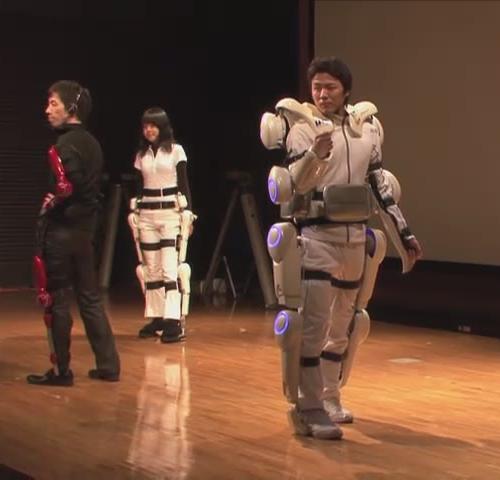HAL (the Hybrid Assistive Limb) is a powered exoskeleton suit currently in development by Tsukuba University in Japan. There are currently two prototypes: HAL-3 (restoring of the leg function) and HAL-5 (a full-body exoskeleton for the arms, legs, and torso). HAL-5 is currently capable of allowing the operator to lift and carry about five times as much weight as he or she could lift and carry unaided.[1][2][3]
Servos of HAL are driven by electrical impulses, are generated by the muscles and picked by the electrodes, attached to the skin of the operator. These impulses are processed by onboard computer, which measures the load and activates the necessary servos of exoskeleton. HAL is powered by the 100 volts battery, attached to the waist.[3]
HAL exoskeleton. [5]
HAL is being designed to assist the disabled and elderly in their daily tasks, or any physically demanding job such as disaster rescue or construction. HAL is mainly used by disabled patients in hospitals, and can be modified so that patients can use it for rehabilitation.[2]
References:
1. CYBERDYNE. – Mode of access: http://www.cyberdyne.jp/english/.
2. Hybrid Assistive Limb. – Mode of access: http://en.wikipedia.org/wiki/Hybrid_Assistive_Limb.
3. Hybrid Assistive Limb. – Mode of access: http://ru.wikipedia.org/wiki/Hybrid_Assistive_Limb.
4. Cyberdyne HAL Robot Suit and Cybernics research #DigInfo. – Mode of access: http://www.youtube.com/watch?v=_8VhW9JIwUk.
5. HAL(Hybrid Assistive Limb) from Cyberdine. – Mode of access: http://www.youtube.com/watch?v=ynL8BCXih8U.
